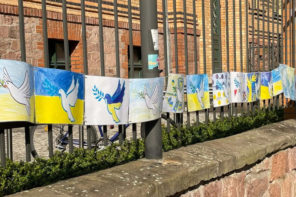What are the intended/unintended consequences of anti-smuggling and anti-trafficking policies?
Migrant smugglers exist because there is demand for people to move irregularly or illegally across borders. Yet all too often, anti-smuggling policies only engage the ‘supply’ side of the equation. That is, policymakers often privilege law enforcement and border security measures, without addressing any of the underlying drivers of migration. The unintended consequences of such policies are manifold.
Often times, such measures drive up the price of smuggling services, as smugglers factor increased risks and challenges into their pricing and pass additional overhead and costs on to the consumer. In other contexts, anti-smuggling policies push small-time entrepreneurs out of the smuggling market. This provides the impetus for more sophisticated criminal actors to coordinate and coalesce around the profits to be made, or for other more established criminal organizations – who have the criminal expertise needed to avoid detection, bypass barriers, or bribe officials – to capture the market. Lastly, rather than deter migrants, anti-smuggling policies often do little more than force migrants and asylum seekers to take riskier, more dangerous routes to their destination, increasing their need for a smuggler, rather than reducing it.
The only way to sustainably counter migrant smuggling is to reduce demand for irregular migration through the creation of safe and legal routes. Given that such policies are unlikely to be pursued due to the current political climate, an alternative objective should be to make the smuggling market as minimally criminal and violent as possible. This requires avoiding policies that create volatility in the smuggling market, so as to allow some of the protection and insurance mechanisms that are often inherent in the smuggling industry – such as price guarantees and safety assurance – to develop. These allow for migrants to mitigate against the risks of mistreatment and exploitation.
Are border fortifications/restrictions a useful or counterproductive response to mass movements of people?
In certain contexts, border fortifications and restrictions might block the mass movement of people temporarily, but such measures are ultimately counterproductive because they do nothing to address the underlying drivers of migration. In fact, such barriers, whether in the form of a wall or more restrictive visa policies, increase demand for smuggler services by rendering smugglers indispensable for migrants and asylum seekers.
At best, border fortifications and restrictions merely displace migrant flows, but they do not stop them, especially in cases of mass movements of people. At worst, they put migrants and asylum seekers in greater danger; pave new paths of exploitation and corruption along emerging and newly developed routes; provide the impetus for new migrant smuggling networks to form; incentivise the increased criminalisation of existing networks; and encourage established organised crime networks to enter into the migrant smuggling industry.
One of the greatest risks of a strategy focused on border controls and restricted movement is that it creates stagnant populations behind new borders. Evidence in the Horn of Africa, North Africa and in the Afghanistan-Pakistan region shows that stagnant populations with a strong, unsatisfied desire to migrate can become easy recruiting grounds and visible potential profit centres for smugglers, traffickers, and other criminal groups.
Furthermore, they are more likely to create friction with local populations, inflame nationalist rhetoric, and prompt a highly-politicised response from governments in an effort to appease the local anxieties. All too often, these responses are heavily securitised – such as mass arrests and heavy-handed crack-downs – which again only serve to exacerbate the root causes of the problem in the first place.
→ Back to the virtual roundtable.










